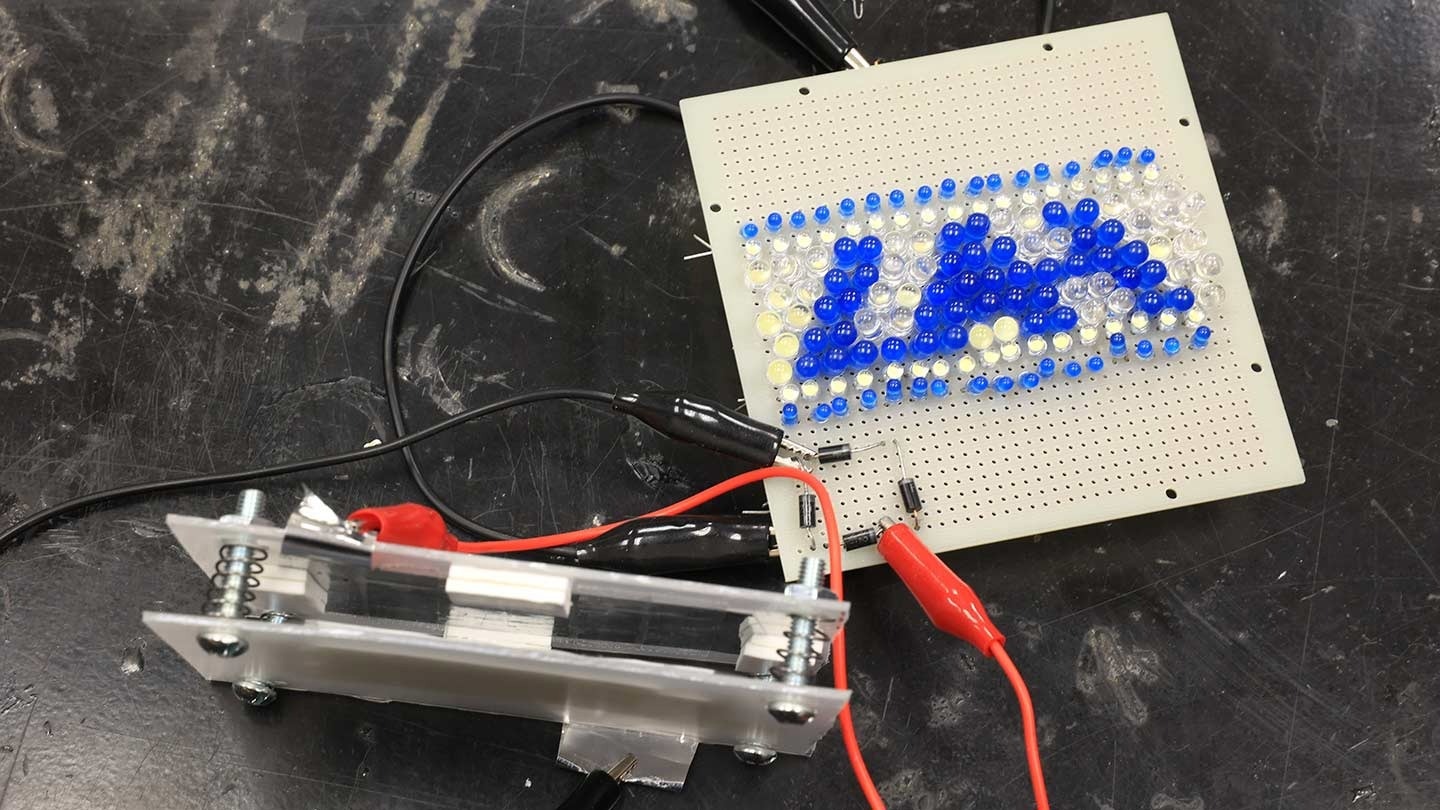University of Alabama in Huntsville (UAH) researchers have developed a novel type of triboelectric nanogenerator (TENG) that uses limestone putty to generate energy, offering significant cost reductions over traditional production techniques. TENGs are small devices that were created in 2012 and are used in wearable electronics, condition monitoring, and wireless sensor networks.
 LED display demonstrates “tacky” nanogenerator concept which has wide potential applications. Image Credit: Michael Mercier|UAH
LED display demonstrates “tacky” nanogenerator concept which has wide potential applications. Image Credit: Michael Mercier|UAH
They are designed to transform mechanical or thermal energy into electricity. Examples include biochip transponders for agricultural animals, heart monitor implants, and tire pressure alarm sensors.
Through motions like walking, vibration, revolving tires, moving wind, or flowing water, TENGs gather electricity for these devices by transferring an electric charge between two objects when they contact or slide against one another. All of these motions have relatively minimal environmental effects.
The UAH breakthrough is a new sort of TENG that uses “tacky” materials like double-sided sticky tape or limestone putty to produce a charge, making it significantly more affordable and easier to construct than previous TENGs, which involve expensive nanotechnology-based production processes.
Traditional TENGs require nanotechnology-based fabrication and other special equipment. Only craft-level skill is needed to build our triboelectric energy harvester.
Dr. Gang Wang, Associate Professor, Mechanical and Aerospace Engineering, University of Alabama in Huntsville
A report detailing the breakthrough was published in the American Chemical Society journal, ACS Omega. Dr. Yu Lei, chair and associate professor of chemical and materials engineering at UAH, Dr. Moonhyung Jang, a postdoctoral research assistant, and Sean P. Rabbitte, an undergraduate research assistant, are Wang’s co-authors.
The study is a component of the Small Business Innovation Research (SBIR) program of the Department of Defense (DOD), an endeavor that promotes government-funded grants or contracts that incentivize domestic small businesses to participate in federal R&D projects with the aim of commercialization.
Wang added, “Our industrial partner is Materials Sciences, LLC, and Dr. Simon Chung is the project lead. We have already filed a patent for the triboelectric energy-harvesting design using adhesive layers.”
Comparing UAH to previous TENGs, the innovative use of metalized polyester sheets and limestone-based mounting putty expands the operational frequency spectrum. This is important because a broader frequency bandwidth is needed for some tiny energy harvesting applications, including wearable exoskeleton systems and health monitoring, to capture energy from human motion.
“Typical contact-separation TENGs operate at a frequency below 10 Hz. However, we are able to extend the bandwidth up to 80 Hz by introducing these triboelectric layers in a vibration-based energy-harvester design. After the successful demonstration of the TENG design using double-sided tape, we started to explore less tacky materials for easier separation of the materials. This is how we came up with the idea of using limestone-based putty,” Wang concluded.
Future putty-based generator research by UAH researchers aims to investigate the efficacy of other minerals, including marble, sandstone, and lunar soil.
Journal Reference:
Jang, M.-H., et. al. (2023) Power Generation by a Limestone-Contained Putty. ACS Omega. doi:10.1021/acsomega.2c07688.
Source: https://www.uah.edu/

